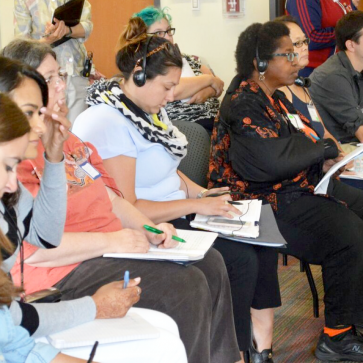This course supports your team to conduct a Lesson Study cycle on fractions. Your team should include at least one grade 3-5 teacher who will be teaching a fractions unit.

Module 2 | What Is Challenging About Fractions?
What Makes Fractions So Difficult?
Like Jordan, many students feel that “there’s something weird about fractions.” The three tasks in this section shed some light on students’ challenges with fractions.There’s something weird about fractions. If the numerator, which is the top, is the same, the bigger the denominator the smaller the fraction. - Jordan, Grade 5 student
- Solve each task individually, and anticipate student thinking, before your team members share solutions. Each task is downloadable.
Common Challenges with Fractions
From solving the three different fraction tasks and considering student solutions, summarize your team’s insights so far about the question:- What is difficult for students about fractions?
Discuss as a team:
- Anything in the table that is puzzling or particularly interesting to you
- Anything that helps you understand student responses to the tasks 1-3 that you examined
Record in Item 3 of the Teaching-Learning Plan any insights you would especially like to remember related to student thinking about fractions.
What's Hard About Fraction Number Sense? (PDF)
| Challenge in Understanding Fractions | Example of Student Difficulty or Understanding |
|
A Fraction is a Number
|
|
|
Fractions Can Be Greater than One
|
|
|
Fractions Can Be Partitioned
|
|
|
What the Denominator Means
|
|
|
Knowing What is the Whole
|
 |
|
Fraction Size
|
|
